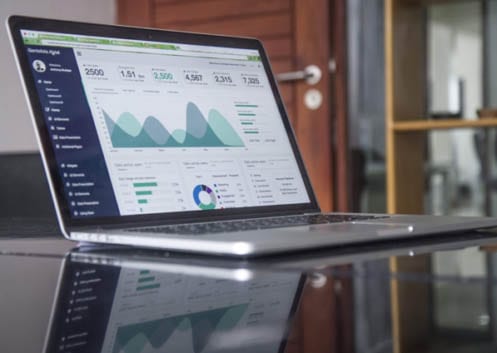
4 Tips For Creating Effective Data Visualizations
There are endless possibilities when designing and creating effective data visualizations. A great visualization will make your clients wonder how they ever lived without it. Data visualizations help the human brain process information, identify areas that need attention or improvement, and convey concepts in a universal manner.
So how do you create a visualization that meets these needs? Effective data visualizations consist of a few things: a well-thought-out design, attention to your project scope, and strong decision-making skills on what sort of information to include and what to leave out.
1. KNOW YOUR AUDIENCE.
How will your audience be consuming the visualization? Is the display optimized to be shown on a projector, monitor, or maybe even a mobile device? Optimizing your data visualizations correctly will help your audience read it in the way you intended. It’s important to know your audience that you’re creating the visualization for. If the audience is creative, it’s likely they’ll be more receptive to bar graphs and interactivity. If they’re technical, they may appreciate more statistical information.
2. LEAVE ENOUGH TIME FOR CREATING VISUALIZATIONS.
Don’t underestimate the time it will take to create visualizations when you are planning your project timeline. Data projects are often heavily time-focused in the data cleaning and analysis phases, putting visualization creation at the end.
However, the best way to make sure that you have clean and presentation-ready visualizations is to think of visualization creation as an iterative process. Start making simple visuals or graphs early when you are in the data exploration phase, and then make them more robust when you are ready to present your key findings. Being able to see what you’re working with in a visual form can help your project, and the visualizations should go through multiple drafts as well.
3. ENSURE YOU’RE ONLY PUTTING THE IMPORTANT INFORMATION INTO VISUALIZATIONS.
Does the information you’re including in your visualization fit the scope of the project, or are you including useless information to fill your visual? Eliminating non-valuable information will ensure your visual is matching the objective of the project.
If the information isn’t necessary to helping your audience understand what they need to know, it’s okay to eliminate it. It’s easy to make a visualization look nice – but make sure it is valuable information to your project and audience. Ideally, the visualization will look nice and answer you audiences’ questions.
4. MAKE YOUR DESIGNS EASILY READABLE.
It’s easy to find fun fonts and adding multiple colors, but information can get lost in visuals that are too busy. Do your titles make sense and are they easily-readable? Does your design fit the type of visualization you’re creating? For example, if you have categorical data, you probably wouldn’t want to use a line graph.
Along with decluttering, it’s important to ensure your font sizes and font choices are legible. Take time to view your visualization on different screens – mobile, projector, monitors, etc. Testing pays off in the long run.
By following these tips, your dashboards will allow your clients to understand their information in ways they never could and turn their data into action items.
Need help sorting through your data and performing a data analysis? Request a free consultation with CSpring today.